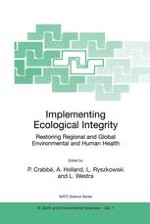2000 | OriginalPaper | Chapter
State Parks — as a Model of Nature and Culture Protection and Sustainable Development
Author : Rima Kitovienė
Published in: Implementing Ecological Integrity
Publisher: Springer Netherlands
Included in: Professional Book Archive
Activate our intelligent search to find suitable subject content or patents.
Select sections of text to find matching patents with Artificial Intelligence. powered by
Select sections of text to find additional relevant content using AI-assisted search. powered by
The aim of the system of protected areas in Lithuania is to preserve not only our natural but also our cultural heritage. The system aims to protect the ecological balance, to preserve biological diversity and the genetic fund, to guarantee the restoration of natural resources, to finance research work on tourism, and to monitor the state of the environment. Lithuania’s system of protected areas consists of: 1Conservation areas created to protect the unique characteristics of the natural and cultural landscape, containing strictly regulated nature reserves, managed reserves and protected landscape objects (monuments).2Preservation areas created to protect against the harmful effects of human activity on our natural and cultural heritage. All kinds of protected zones (protected conservation zones, integrated protected areas, protected landscape objects, surface-water bodies, watering places, karst regions, and so on) are included in this category.3Natural resource restoration areas created for the restoration, increase, and protection of natural resources. Protected natural resource plots (timber lots, berry and mushroom habitats, herb habitats, and animal biotypes) are included in this category.4Integrated areas created to allow a combination of conservation and preservation with recreation and human activity (agriculture, forestry, etc.), managed under a general protection and use program. Parks, both national and regional, as well as biospheremonitoring territories (biosphere reserves and biosphere polygons), are included in this category.
